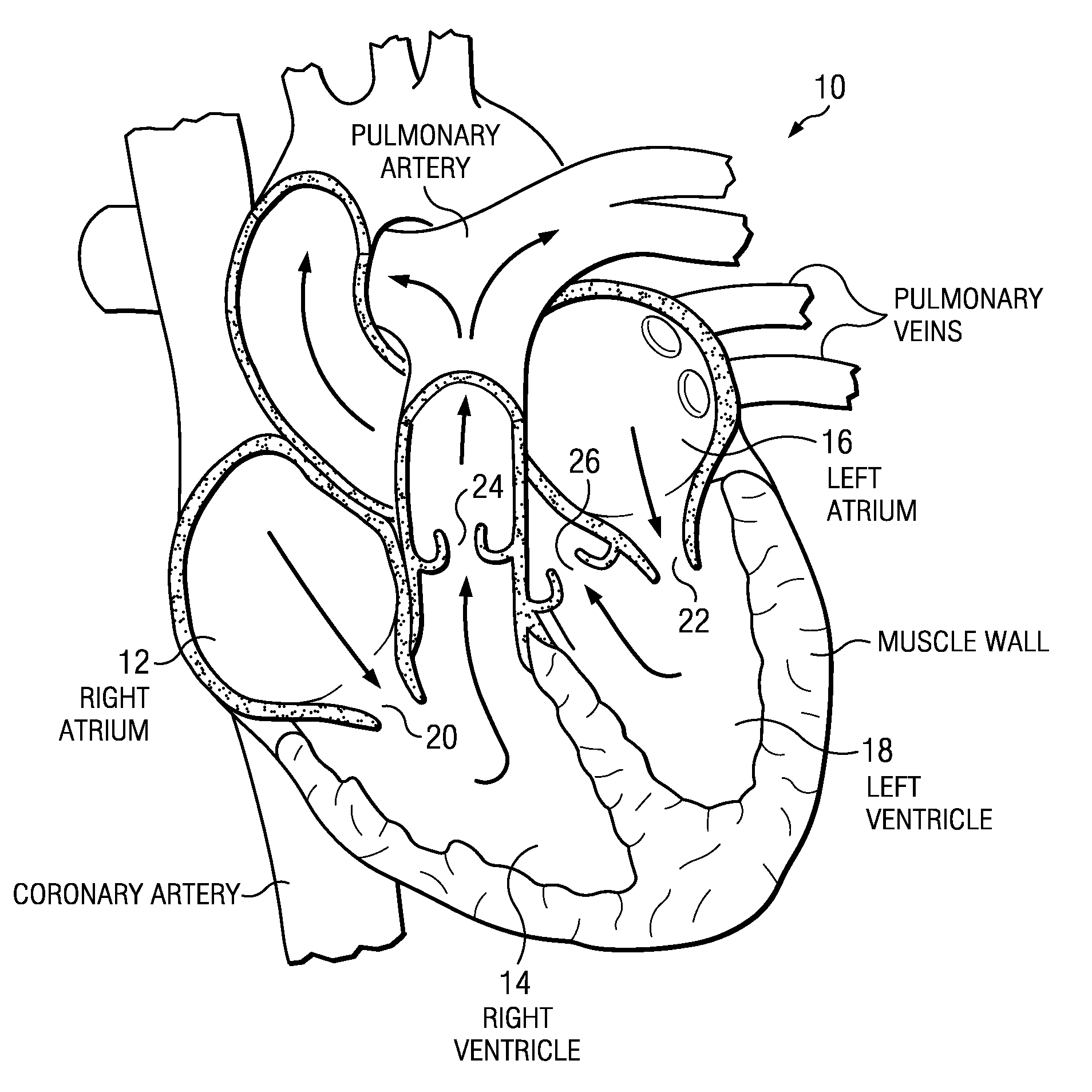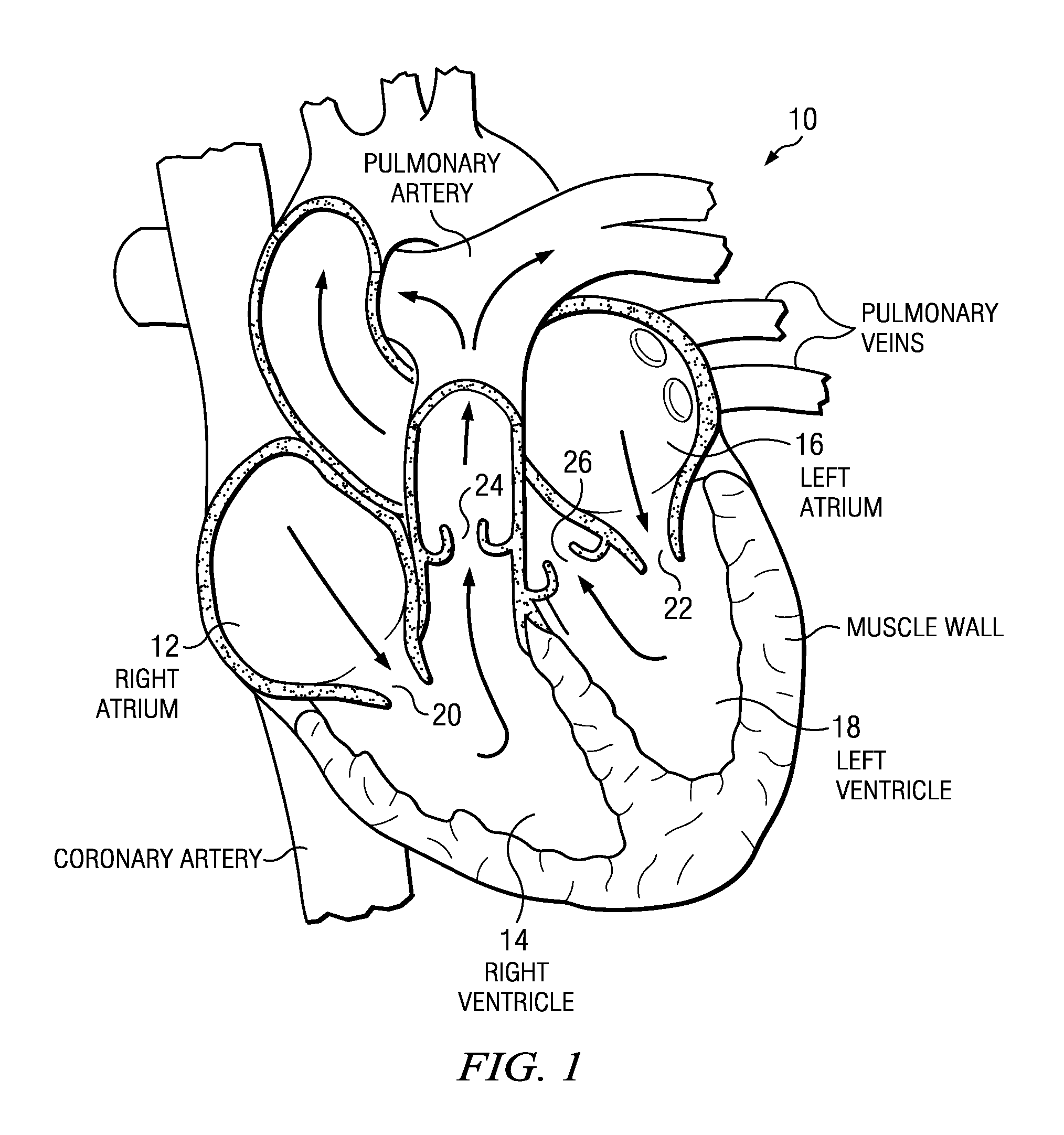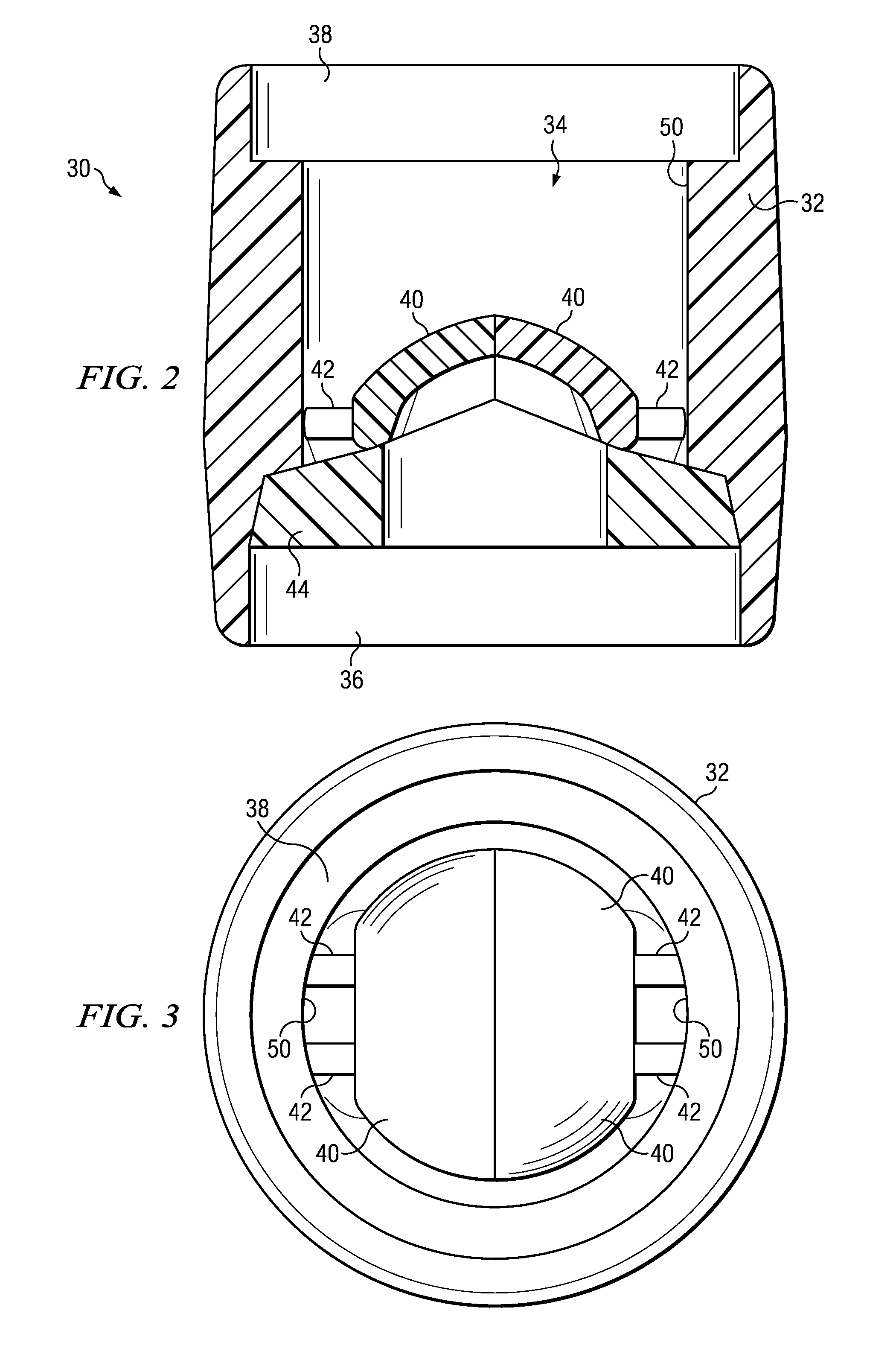Valve for ventricular assist device
a technology of ventricular assist and valve, which is applied in the direction of heart stimulators, prostheses, therapy, etc., can solve the problems of inability to meet the needs of patients, etc., to achieve the effect of reducing turbulence, promoting flow, and eliminating dead zones
- Summary
- Abstract
- Description
- Claims
- Application Information
AI Technical Summary
Benefits of technology
Problems solved by technology
Method used
Image
Examples
Embodiment Construction
[0027]Referring to the figures, wherein the same reference numerals and symbols are used to refer to equal parts, FIG. 2 shows a valve 30 according to the present invention. The valve includes a housing 32 adapted for connection to the pump chamber of a ventricular assist device (not shown). The housing 32 defines a passage 34, normally cylindrical in configuration, for flowing blood in and out of the VAD. With respect to the valve shown in FIG. 2, the blood would flow upward from an inlet port 36 to an outlet port 38. The valving function is provided by two symmetrical flaps 40 that are attached to the interior surface of the housing 32 by means of struts 42. A support ring 44 provides a base with an interior opening 46 (seen in FIG. 5) and a conforming seat 48 (also seen in FIG. 5) where the flaps 40 rest when the valve is closed.
[0028]For ease of description, the terms up and down are used with reference to the figures in describing the function of the valve 30, it being understo...
PUM
 Login to View More
Login to View More Abstract
Description
Claims
Application Information
 Login to View More
Login to View More - R&D
- Intellectual Property
- Life Sciences
- Materials
- Tech Scout
- Unparalleled Data Quality
- Higher Quality Content
- 60% Fewer Hallucinations
Browse by: Latest US Patents, China's latest patents, Technical Efficacy Thesaurus, Application Domain, Technology Topic, Popular Technical Reports.
© 2025 PatSnap. All rights reserved.Legal|Privacy policy|Modern Slavery Act Transparency Statement|Sitemap|About US| Contact US: help@patsnap.com



